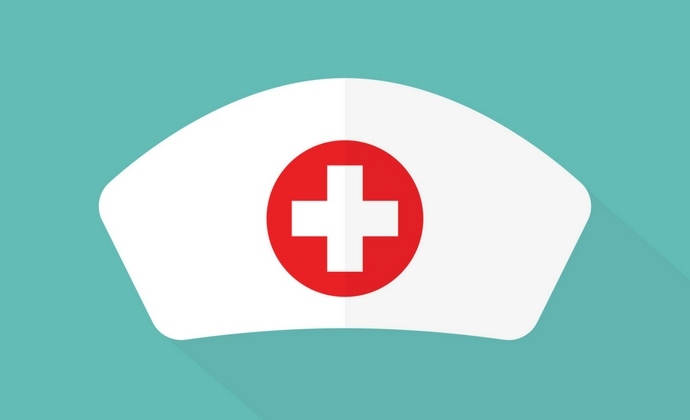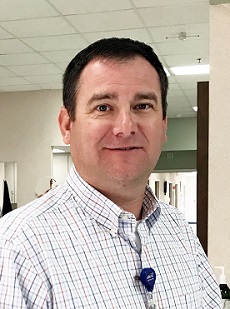Real-Time Insights into Nursing Workflow Maximizes Productivity
Morgan Memorial Hospital used real-time data and communication to optimize its nursing workflow, which reduced costs, increased productivity, and grew its regional influence.

Source: Thinkstock
- An elderly patient presses the nurse call button to get assistance with standing up and using the toilet, while another patient in the next room presses the button to get help with changing the TV channel. Further down the hall, lights turn on for another three patient requests. This is all part of the nursing workflow at a hospital.
Ensuring that nurses respond in a timely and efficient manner dictates productivity on a hospital floor. But traditional call systems that do not rely on real-time data on patients and their requests can threaten nursing productivity, explained Adam Bedgood, Chief Nursing Officer at Morgan Memorial Hospital.
“The old approach to nurse call systems is where the patient would hit a button and then it would ring the desk or the unit secretary who would have to answer the call, find out what the patient needed and then try to track down a nurse to relay that message,” he recently told RevCycleIntelligence.com.
“There was a lot of walking around and trying to find nurses to get back and relay a message that the patient has or a need that the patient has. Then, the nurse has to go to that room. It was a long approach.”
In the time that it takes a unit secretary or desk staff to track down a nurse and for the nurse to find time to handle the request, that elderly patient seeking help to move across his hospital room may stand up and fall. A nurse may also attend to the patient asking for help with his TV before addressing a more serious request from a patient that could result in a costly adverse event, like a fall.
READ MORE: How the Nursing Work Environment Affects Patient Outcomes
“Obviously, falls are bad for the patient and bad for the organization,” he said. “They result in money and injury.”
Hundreds of thousands of patients fall in the hospital and between 30 to 35 percent of those falls result in injury, research shows. Those injuries extend hospital stays by 6.3 days on average, costing the hospital an additional $14,056.
On top of the added costs of adverse events, nurse productivity suffers when staff cannot identify why a patient is requesting assistance. A patient looking for batteries for a TV remote results in a nurse communicating with the patient, going to retrieve supplies, and going all the way back to the patient room for assistance.
Like in most industries, time is money in healthcare, especially at a critical access hospital in Madison, Georgia. Budgets are already tight and so are staffing levels.
Morgan Memorial Hospital had to modernize their legacy nurse call system to eliminate these nursing workflow inefficiencies and the added costs associated with inadequate workflows.
READ MORE: How Value-Based Reimbursement Affects Physician Productivity
Nursing managers partnered with Amplion to create a nurse call system that used real-time data and instant, detailed nurse notifications to optimize nursing workflows and decrease costs of care and staffing.

“From their room, the patient is able to call their nurse directly without going through a unit secretary or a unit clerk,” Bedgood explained regarding the new system. “They can hit a button and it will ring a phone in the nurse's pocket. They have direct access to the nurse. They also can hit certain features on their call button to say, for example, they need pain management. They just press that button and the nurse would know exactly what the needs are of the patient.”
The updated nurse call system also allows patients to contact unit clerks at the nursing station to deliver more complex messages to their attending nurse.
“For example, if they call the nurses station and said, ‘I'm having trouble with my television,’ that message can be relayed directly to the nurse because the nurse is carrying a phone in her pocket,” he elaborated. “The nurse takes fewer steps to go to the room to address the issue because they know what the issue is or the need is before they ever get to the room. That saves a lot of time and a lot of steps.”
Adding instant data and direct nurse communication to the nursing workflow allows providers to care in real-time.
READ MORE: Real-Time Data for Denials Management Aids Practice’s Lagging A/R
“We've been able to tackle real-time problems if they should occur and head them off before they grow big,” he said. “We're able to see from the administrative level as we go up and down the halls. We can get a general snapshot of what's going on in the unit. We can tell if there's a lot of calls going on and if staff are able to answer those calls. We're able to handle things quickly and pretty much in real-time.”
Transitioning to real-time care led to reduced costs and improved care quality. For example, the number of falls occurring in the hospital significantly dropped, Bedgood observed.
“The nurse gets the message so much faster,” he pointed out. “They can get to the room so much faster to prevent falls.”
“There's also an alarm management built into the system as well so if you have a bed or a pad alarm it goes directly into Amplion,” he added. “If a patient were to try to get up, it not only alarms the nurse that's taking care of the patient but it alarms all of the caregivers. That way, no matter who is near the room, they can get in there quickly to make sure that we prevent a fall.”
Morgan Memorial Hospital also saw improvements on the nurse staffing front. The optimized nursing workflow particularly impacted staffing levels because real-time data and specific patient requests allowed nursing managers to more accurately assess patient acuity and schedule the right number of staff to address those patients.
“You're able to adjust staffing patterns by the needs and the acuity of the patients that we have in the building,” he said. “We may be able to lower costs by flexing staff as well. Not only can we use the data to increase staff but we also can use it to decrease the day. If the acuity has decreased, we know that, and we know that there are not as many calls or that the needs of these patients are not as great. We may be able to lower staffing by four hours. Over time, four hours adds up.”
Understanding patient acuity through real-time data also allows nursing managers to manipulate patient assignments by the needs of the patients.
“Our charge nurse gives patient assignments out based on acuity and we use Amplion to help us make the decisions on the acuity,” he related. “We know which patients require more time or more needs. It allows us to have an equal approach in how we give patient assignments, which is, obviously, to ensure that patients are kept safe and that we're able to take care of their needs.”
And the improved patient assignment method helps nurses prioritize and predict their day. Nurses now have the ability to understand that an elderly, high-risk patient may need more of their attention than the young adult recovering in the next room who is also on their attending list that day.
Nurses can also prioritize patient requests because they know why patients are seeking them. Getting batteries for one patient should no longer increase patient safety risks for another patient seeking help with standing.
With insight into their workflow, nurses could better predict their days and respond more efficiently to patient needs. As a result, nursing satisfaction grew along with patient satisfaction, Bedgood reported.
“It just makes their day smoother and a lot of that is due to faster communication,” he said.
As costs dropped and satisfaction increased at Morgan Memorial Hospital, the critical access hospital saw their pull in the region grow. While not participating in value-based reimbursement themselves because of their critical access status, neighboring care centers under the new payment methodology sought Morgan Memorial Hospital for its high-value care.
“We do a lot of rehabilitation here, so we have patients referred out of other tertiary care centers, which are impacted by value-based reimbursement,” Bedgood elaborated. “They want costs kept low and we're able to help them by having safe and efficient care here with good outcomes for their patients that may have had a surgical procedure, for example, at their hospital.”
“For our hospital, it makes a small regional improvement just because we get referrals from some of the larger hospitals that surround us and are more involved with value-based purchasing.”
Using real-time insights for improved nursing workflows brought Morgan Memorial Hospital from a critical access hospital suffering from productivity and satisfaction challenges to a viable player in their regional market.
